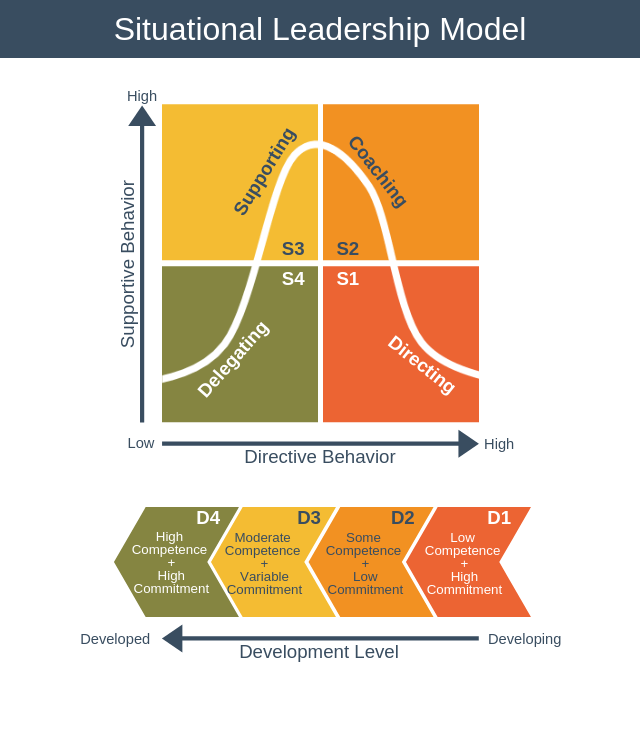Situational leadership is a leadership style that has been developed and studied by Kenneth Blanchard and Paul Hersey. Situational leadership refers to when the leader or manager of an organization must adjust his style to fit the development level of the followers he is trying to influence. Leadership Behaviors are easy to understand, though perhaps requiring effort to perform consistently. Behavior change gives every leader a path forward to increasing effectiveness. Behaviors can be learned whereas characteristics, such as charisma, seem inborn and more difficult to practice. Situational Leadership also relies on a few key behaviors. However, Situational Leadership is more effective management than leadership as it focuses on the delegation or learning new tasks, a small part of the overall picture.
Situational Leadership points out how the manager can adapt to the follower. The manager assesses the follower in terms of the follower’s relationship to a particular task. As each person is aware of and adapts to progress or the need to step back and relearn, the employee performance improves. This aligns with one part of contributing to a high-quality leader-member exchange which is the manager understanding where the employee is what and what the person needs to succeed.
The Situational Leadership® Model is a timeless, repeatable framework for leaders to match their behaviors with the performance needs of the individual or group that they are attempting to influence. Situational Leadership® is based on the relationship between leaders and followers and serves as a framework to analyze each situation based on the Performance Readiness® Level that a follower exhibits in performing a specific task, function or objective. Then, based on the leader’s diagnosis, the necessary amounts of relationship behavior and task behavior are applied and communicated to the follower in order to support their needs and advance development.

Blanchard and Hersey developed a 4 part model:
Directing – when an employee is new to a task or job
Coaching – the stage in which the employee is doing the task but tentatively and probably not perfectly
Supporting – the employee knows the task but lacks some confidence
Delegating – the employee is up to speed and can handle the job
The model is practical and appreciated for its practicality by managers and supervisors. It is a quick tool that can be taught by qualified trainers and once learned can be immediately applied. While there is an assessment tool that gives the manager or supervisor a profile and also information on how well they can flex into other styles, it is not required for teaching the model. Managers and Supervisors quickly grasp the idea.
